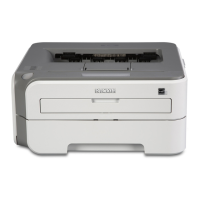2. Click [Roles] in the left column, click [Add Roles] from the [Action] menu.
3. Click [Next>].
4. Select the "Web Server (IIS)" and "Active Directory Certificate Services" check boxes, and
then click [Next>].
5. Read the content information, and then click [Next>].
6. Confirm that [Certification Authority] is checked, and then click [Next>].
7. Select [Enterprise], and then click [Next>].
8. Select [Root CA], and then click [Next>].
9. Select [Create a new private key], and then click [Next>].
10. Select a cryptographic service provider, key length, and hash algorithm to create new
private key, and then click [Next>].
11. In "Common name for this CA:", enter the Certificate Authority name, and then click [Next>].
12. Select the validity period, and then click [Next>].
13. Leave the "Certificate database location:" and the "Certificate database log location:"
settings set to their defaults, and then click [Next>].
14. Read the notes, and then click [Next>].
15. Select the role service you want to use, and then click [Next>].
16. Click [Install].
17. When the installation is complete, click [Close].
18. Close [Server Manager].
Creating the Server Certificate
After installing Internet Information Services (IIS) and Certificate services Windows components, create the
Server Certificate as follows:
Windows Server 2008 R2 is used to illustrate the procedure.
1. On the [Start] menu, point to [Administrator Tools], and then click [Internet Information
Services (IIS) Manager].
2. In the left column, click the server name, and then double-click [Server Certificates].
3. In the right column, click [Create Certificate Request…].
4. Enter all the information, and then click [Next].
5. In "Cryptographic service provider:", select a server, and then click [Next].
6. Click […], and then specify a file name for the certificate request.
7. Specify a location in which to store the file, and then click [Open].
8. Close [Internet Information Services (IIS) Manager] by clicking [Finish].
Windows Authentication
41
